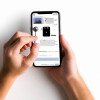
Embracing diversity and inclusivity; this guide expounds on how to make the most out of iOS accessibility features to offer a comprehensive user experience. Dive deep into the plethora of assistive technologies embedded within iOS and learn how to make your applications universally accessible.
Understanding the Importance of Accessibility in User Experience Design
User experience (UX) design encompasses a variety of practices focused on enhancing user satisfaction while interacting with a product. However, in a world so diverse, creating a one-size-fits-all approach proves challenging. This is where accessibility steps in. Accessibility in design ensures that the application is user-friendly not only for individuals without disabilities but also for those with disabilities. Apple’s iOS, in particular, boasts a host of built-in accessibility features destined to provide an equal User experience to all.
Scope of iOS Accessibility Features
Apple’s commitment to inclusivity is evident in the myriad of accessibility capabilities that its operating system, iOS, offers. With features ranging from VoiceOver for visually impaired users, to Switch Control for users with limited mobility, iOS exemplifies how an operating system can break barriers and promote inclusivity.
Leveraging VoiceOver for a Visually Accessible User Experience
VoiceOver is a screen-reading tool available on all Apple devices. It describes aloud what appears on the screen and helps users navigate apps using different gestures. This feature assists not only those with significant visual impairments, but also users who have difficulty reading small text or comprehending complex visuals. By incorporating VoiceOver compatibility into your app's design, you're ensuring that these groups experience your app just as anyone else would.
Making the Most of Switch Control for an Inclusive User Experience
Switch Control is an exceptionally valuable feature for users living with motor disabilities. It allows them to control their device using adaptive devices like joysticks or switches. By developing apps that work seamlessly with Switch Control, you can provide users with physical disabilities with an inclusive user experience.
Incorporating Type to Siri for the Hearing Impaired
For those who have difficulty speaking or hearing, Siri offers a 'Type to Siri' feature. With this, users can type their Siri commands instead of voicing them. Developing applications compatible with this feature can enhance the experience for hearing-impaired users, proving yet again that inclusivity should be at the heart of app design.
Deploying Live Listen for Enhanced Sound Sensitivity
Live Listen turns your iPhone, iPad, or iPod Touch into a personal hearing aid for those with mild to moderate hearing loss. It uses the microphone to pick up sounds around the user and then amplifies them. By incorporating Live Listen compatibility in your app, you make it more accessible and user-friendly for the hearing-impaired.
Ensuring Magnifier Functionality for an Improved Visual Experience
The Magnifier is a feature that uses the device’s camera to enlarge objects, helping those with visual impairments to see more clearly. Integrating Magnifier functionality into your app can help make it more visually accessible and user-friendly.
















